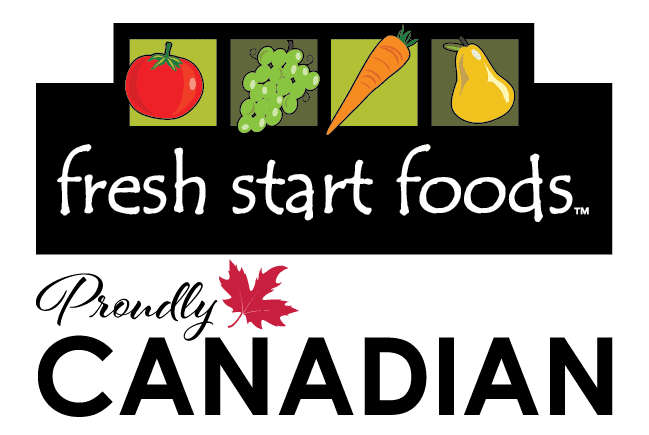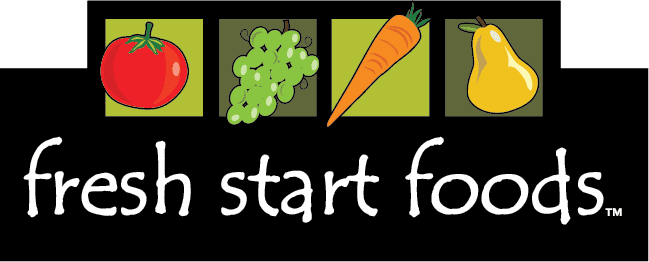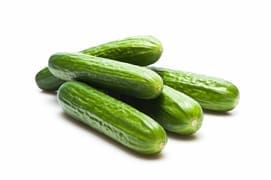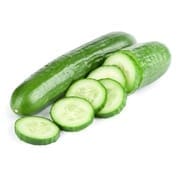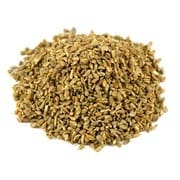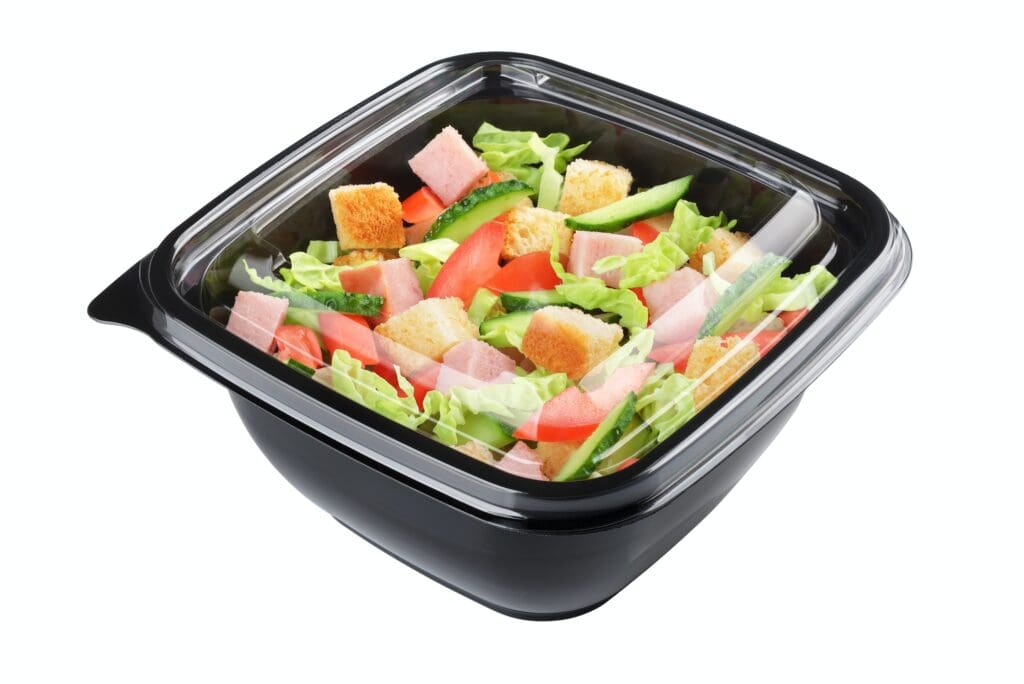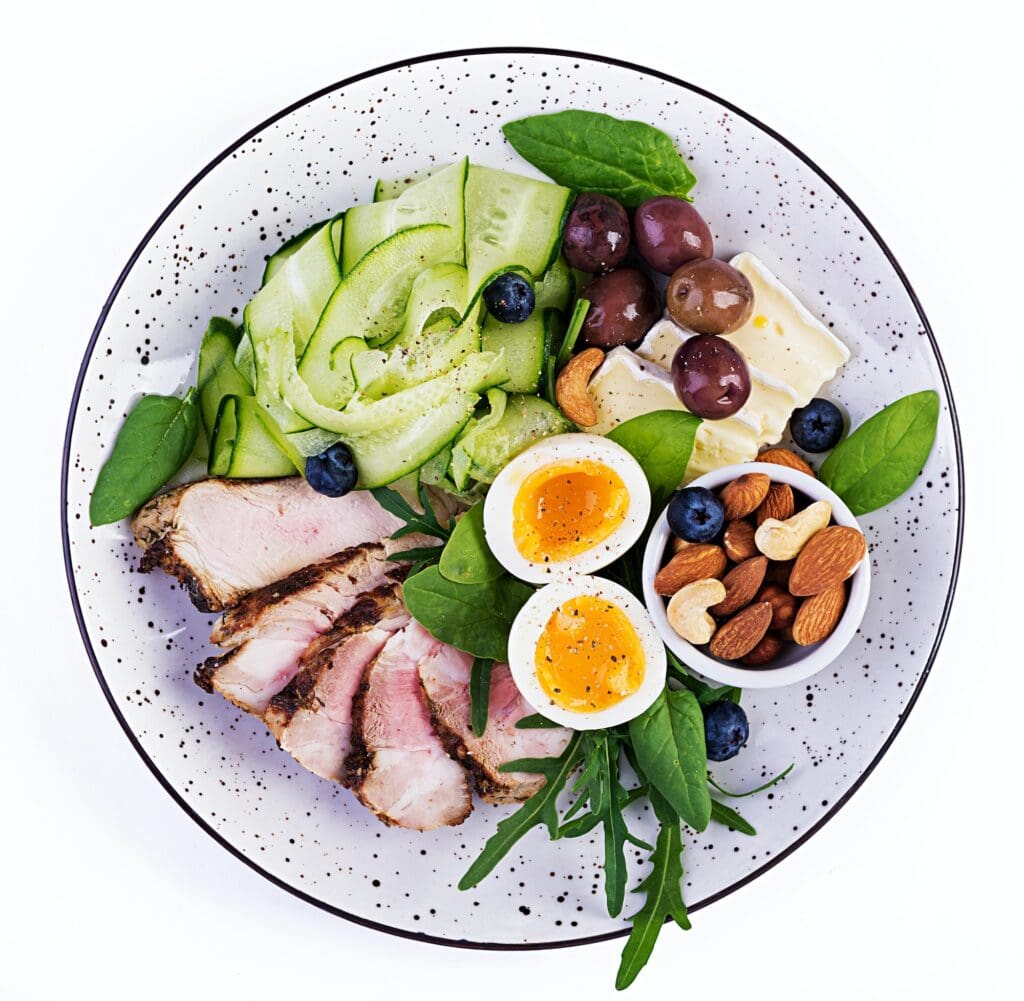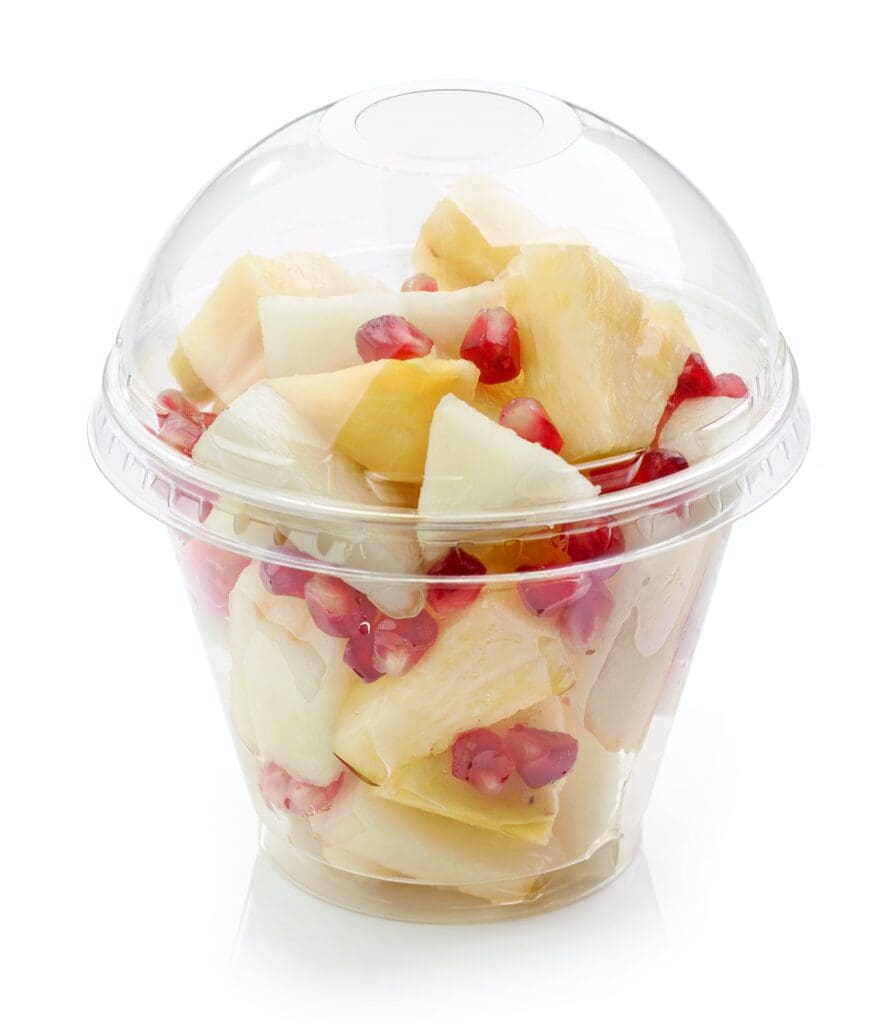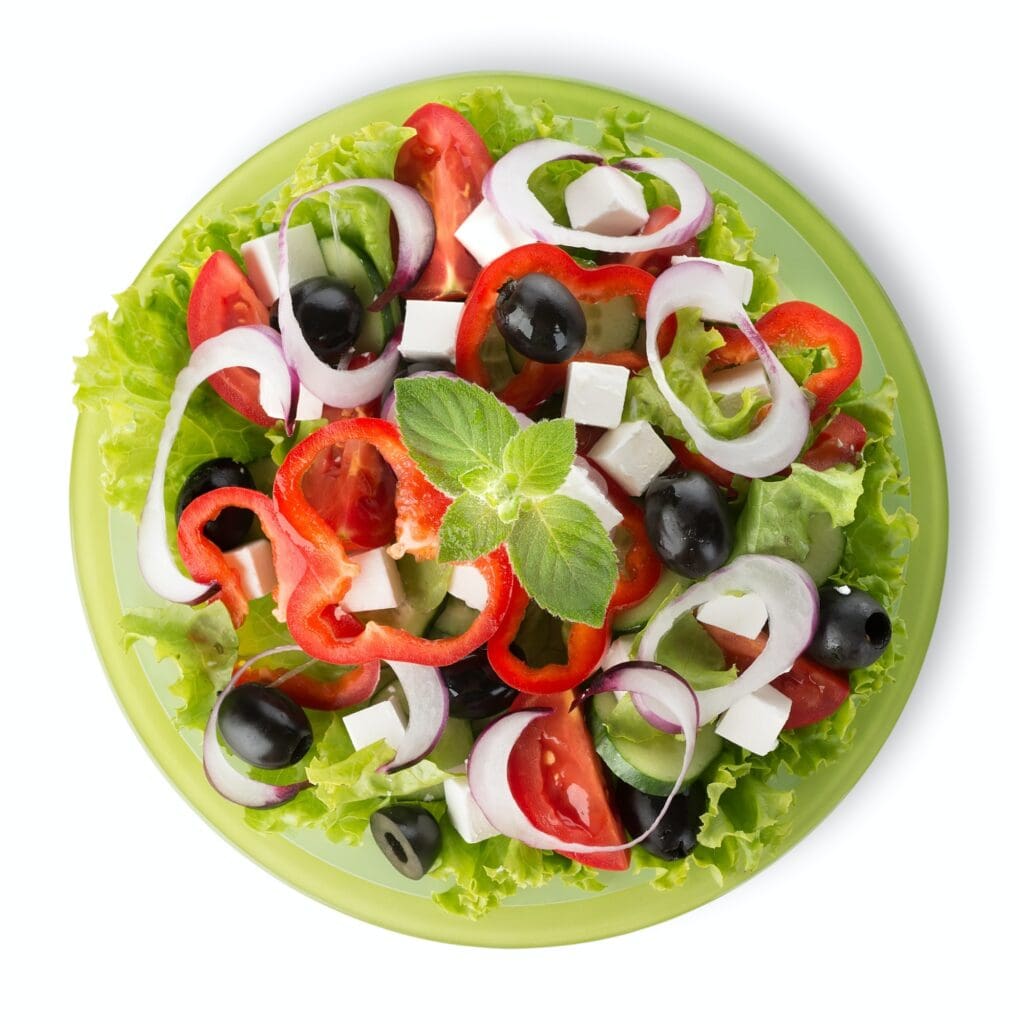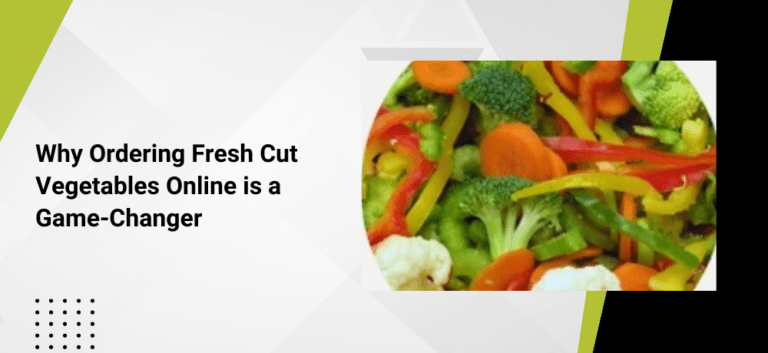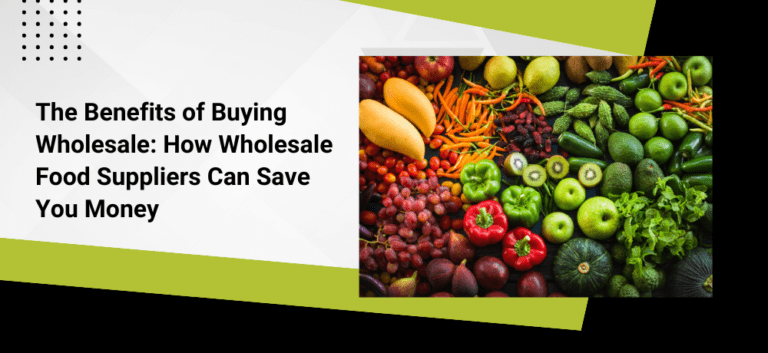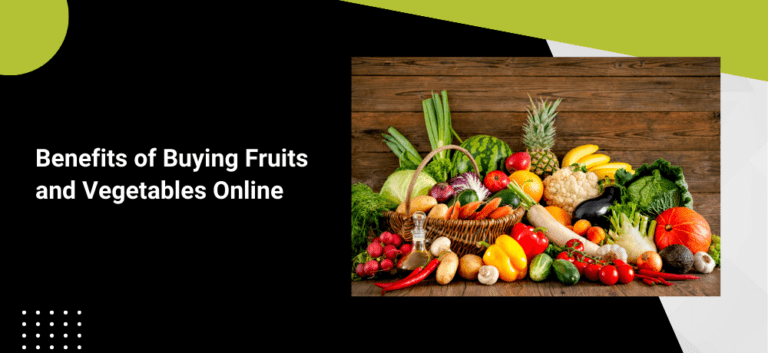ONTARIO LOCAL
** DONE ** CHINESE VEGETABLES– The Ontario baby Shanghai bok choy, nappa and bok choy seasons have finished.
HARD SQUASH– Pepper (Acorn), butternut, spaghetti, buttercup and delicata squash continue with good quality as volume is declining.
Pricing is steady with stronger overtones.
POTATO– The 2025 crop is under cover for the winter and growers are packing product out of storage. Yields are down significantly in some
regions, due to the hot, dry growing conditions. However, parts of the province that received adequate rain produced above-average yields.
The size profile has been disappointing in some areas. Chef Large #1, “A”, “B” and “C” (creamers) sizes are all available.
PEARS– Both Ontario Bartlett and Bosc pears continue. Both are packed in 8x2L clamshells. Supplies are good, with excellent quality. Bosc
pears will run until December, while Bartletts will wrap up over the next 7-10 days.
LEEKS– Packing out of storage, supplies remain steady with good demand. Quality is very good.
WAX TURNIP (RUTABEGA)– New crop rutabaga continues with good supplies. Prices remain steady.
CARROT– Carrot growers continue packing out of storage. Quality is very good and prices are steady. Heirloom multi colored and red carrot
supplies are very good with good quality.
MUSHROOMS– Supplies are good with no disruptions in supply expected.
CABBAGE– Growers continue packing cabbage out of storage. Green, red and savoy cabbage supplies are very good. Pricing is steady with
good demand.
APPLES– Apples continue to be shipped out of storage. Gold Delicious, MacIntosh, Royal Gala, Honeycrisp, Empire, Spartan, Cortland, Red
Delicious, Ambrosia and Fuji ae all in very good supply. Quality is very good with all sizes available.
HOTHOUSE LETTUCE– Supplies of Sensei Farms baby lettuce are very good with very good quality and exceptional shelf life. Hydroponic
boston/butter supplies are good.
HOTHOUSE STRAWBERRIES– Very light supplies of Ontario hothouse strawberries continue with very strong demand. Quality is very good;
however, berry size is on the smaller side. Supplies should improve in the new year.
ENGLISH CUCUMBERS– Production remains steady with good demand. Quality is very good. Pricing remains steady at lower levels. Sizing
is more balanced with smalls and mediums being the predominant sizes with lighter supplies of large and extra-large.
Tariff Update
Announced, November 14th, 2025 tariffs for products imported into the USA were removed from over 200 grocery items.
Tropical fruits such as avocados (except from Mexico where the USMCA agreement is already tariff free), pineapples and mangos, bananas,
oranges and tomatoes from anywhere except Mexico, where the anti-dumping duty remains in place, had their tariffs retroactively removed
effective November 13th. There are several items the tariffs were not removed, such as cantaloupe, honeydews, asparagus to name a few.
Effective September 1, 2025, the 25% Canadian retaliatory tariffs for items that fall under the CUSMA free trade agreement will end. The list of items includes all USA grown tomatoes, cherry & grape tomatoes, beans, oranges, mandarins, tangerines, satsumas, clementines, lemons, limes, pomelos, papaya, watermelons, peaches, nectarines, cherries and plums.
A new round of US tariffs took effect Friday August 7th that will affect imports from the USA for pineapples from Costa Rica; rate was 10% now 15%, bananas from Ecuador, rate was 10% now 15%. Guatemala remains at 10%. Again, this is only for products landing on US soil, sold to Canadian destinations. If these products can land in Canada, bypassing the US, there will be no tariffs. There are no additional tariffs on items that fall under the Canada, US, Mexico agreement. As Canada and the US did not reach an agreement by August 1st, items not covered by CUSMA are subject to a 35% tariff into the US. Canada has not announced any further retaliatory tariffs.
On Monday July 14th, as previously announced, the US U.S. Department of Commerce announced it is withdrawing from and terminating the 2019 Agreement Suspending the Antidumping Duty Investigation on Fresh Tomatoes from Mexico. In its place, a 17.9% anti-dumping duty on Mexican tomatoes destined for the USA replaced the agreement. Canada can still import Mexican tomatoes duty free under the USMCA agreement. Roma and round tomato market impacts are expected to be minimal until the main Mexican season begins in the Fall. Grape and cherry tomato supply is more reliant on Mexico and markets may react differently.
The April 2nd, tariff announcement, in Washington, confirmed Canadian and Mexican produce, destined for the USA that are compliant under the U.S.-Mexico-Canada Agreement (USMCA), are not subject to additional tariffs. That being said, many produce items from Central America and other countries imported into the USA and then sold to Canada are now subject to a blanket 10% tariff. This includes offshore avocados, bananas, French beans, pineapples, melons and some herbs among numerous other products. There is great concern about the broader application of tariffs on global trading partners and the potential disruptions to supply chains and market stability.
MARKETS TO WATCH: AT A GLANCE
Gold Pineapples: The pineapple market has started to settle down some but remains tight. Pineapple supplies are expected to become
extremely tight January through June, 2026.
Assorted Chili Peppers: Expect elevated prices for the next few weeks as weather issues, regional transitions, and reduced plantings limit
availability. Mexico’s Baja and Sonora early-season production is still recovering from October storms.
Baby Broccoli (Broccolini): Quality is fair, and supplies are extremely tight. Growers are prorating. Some growers are only covering 50%
of 10-week averages.
Broccoli: Quality is okay, but supplies are still very limited. Growers have moved to Yuma, but the rain has limited yields.
Baby Squash: Guatemala continues to show good production, and quality is steadily improving week over week.
Snow Peas / Sugar Snap Peas: Supply from Guatemala remains very limited due to recent weather challenges, and improvement is not
expected for another two weeks. Production in Peru is nearing its seasonal end, which is contributing to tighter overall availability.
Eggplant: Georgia and Florida (Immokalee) are finished for the season. Volume is ramping in South/Central Florida and Mexico (Nogales).
Markets are expected to be slightly higher.
Celery: Light supplies remain an industry-wide challenge. All value-added celery items are triggered. Celery supplies remain limited as
many suppliers are finishing up in the Salinas growing region. The Oxnard region continues to face delays, with early acreage still slow to
come online.
Green Onions: Pricing remains elevated due to lower availability. Recent heavy rainfall across the Mexicali growing region created wet,
muddy field conditions, delaying harvests.
Cauliflower: Cauliflower supplies are improving across all sizes and regions, with the market expected to gradually ease into next week.
Value-added cauliflower products are still triggered, but that is expected to be removed this week.
Spring Mix, Baby Spinach and Baby Arugula: Supplies of tender leaf and spring mix varieties continue to be limited. Prices have eased;
however, rain events have taken a toll on the quality of all tender leaf items especially baby spinach and baby arugula.
California Iceberg: Expect markets to continue decreasing as supplies increase through December. Value-added iceberg items still have
multiple triggers.
California Romaine / Leaf: Value-added romaine and leaf items still have several triggers. Production of romaine as well as green
and red leaf, have increased. Romaine hearts will be available but remain tight across the industry.
Canadian Potatoes: Most of the country’s potatoes are grown in the four eastern provinces, PEI, New Brunswick, Quebec, and Ontario.
Several growing regions in those provinces did not receive the rain needed during August and early September. As a result, yields and size
profile are expected to be down over 2024 by 9%.
Limes: The lime market is tightening with lower volumes, and active markets. These conditions are expected through early 2026 due to
holiday demand.
Honeydew: Offshore and Mexican honeydews are available. Offshore pricing is elevated due to vessel delays and lower yields, keeping
markets high until supplies improve.
Cantaloupe: Offshore cantaloupe pricing is high due to vessel delays and lower yields arriving, keeping markets elevated until supplies
improve.
Stone Fruit: Chilean cherries, by air continue. Pricing is very high. Italian black plums are sporadically available. The first Chilean peaches
and nectarines will arrive mid-December.
Brussels Sprouts: Markets remain elevated and supplies are extremely limited due to quality issues severely reducing yields. Quality is
poor; discoloration, seeder, and small size are prevalent. Value-added products continue to have triggers.
Grapes: California table grape supplies are nearing the end soon, with quality fruit expected to last only a couple more weeks despite some
growers aiming to extend past mid-month. East Coast supply is increasingly shifting to South American imports.
Strawberries: The Florida season has shifted into high gear. Supplies are quickly increasing. Prices are much lower than last week. White
strawberries (Pineberries) are also now available. California continues to struggle with supply.
Watermelon: Seedless supplies are tight. Northern Mexico is winding down, and Southern Mexico will start in 3 to 4 weeks. Florida will go
another week or two. Offshore is starting in a light way. December and January are light production months for watermelons.
Beans: Demand has been light and has put downward pressure on prices. Supply is steady out of Florida as they break into new fields.
Field Peppers: West coast green pepper harvesting is transitioning from California to Mexico; Florida production remains stable. Red pepper
markets are elevated; abnormally cold late autumn weather is reducing supplies.
Zucchini: Green and yellow zucchini supplies have increased; markets are trending lower.
Blood Orange / Cara Cara Orange: The Cara Cara import season is finished. California Cara Cara harvest started last week, with product
available over the next couple of weeks. The fruit set is slightly lighter this year, but average diameter is higher. California blood oranges are
anticipated to begin around Christmas.
Supply and Quality General Update
Production continues to ramp up in the Arizona-California desert region. Load times in Yuma remain long as growers work through muddy fields
and backed-up harvest schedules. Crews are doing everything they can to catch up, but we continue to see loading delays at the cooler through
the early part of this week. The good news: product quality is improving every day, and weights are trending upward as the fields dry out and
temperatures stabilize.
Desert grown iceberg, romaine, and green leaf are all showing stronger quality than in recent weeks. There are still some fringe burn and
scattered mildew pockets being trimmed out in the field, but overall quality is above average for early December. As production ramps up, we’re
seeing some markets are easing, and we should see more consistent availability through the remainder of the month.
Brussels sprouts and green onions remain the tightest commodities, with supplies expected to improve late December. The rains across the
Central Valley pushed California navel sizing heavier, with the crop now peaking on 88 count. Small fruit is available, but expect larger sizes to
dominate as we move deeper into winter and continue into Valencia season next summer. Early navels are eating well and color will continue to
improve as nighttime temperatures drop.
District 3, the desert region, Coachella and Imperial Valleys, are rolling with strong lemon volume, and will remain the primary region through
February. District 1, the central valley region, has started in a small way and will pick up momentum heading into January. Meyer lemons and
seedless varieties are also available with solid supply. Grapefruit is trickling in from the desert, and California mandarins are beginning their
season with peak sizes in the 32/36 range. Cara Caras and early blood orange are starting their first full week of production. Supplies are light
but improving.
VEGETABLES
ICEBERG– Expect markets to continue decreasing as supplies increase through December. West Coast: Value-added iceberg items still
have multiple triggers. Supplies have improved compared to recent weeks, and Yuma production is providing moderate availability; as a
result, markets are easing. Value-added triggers will continue for at least this week. Quality is above average; fringe burn and mildew pressure
are being trimmed at harvest points. Weights are increasing as favorable weather promotes growth. Common defects on arrival include brown
butts, discoloration, and misshapen heads. Weights are ranging from 36 to 42 pounds. East Coast: The season in Belle Glade, Florida has
started; iceberg production will increase over the next two weeks.
ROMAINE / LEAF– Value-added romaine and leaf items still have several triggers. Production of romaine as well as green and red leaf,
have increased. Romaine hearts will be available but remain tight across the industry. All leaf item triggers will continue for value-added
products for at least this week. Reported quality issues include discoloration along with tip and fringe burn. A limited supply of green leaf and
romaine is being harvested in Oxnard, California.
SPRING MIX/BABY SPINACH/BABY ARUGULA/BABY KALE– Supplies of tender leaf and spring mix varieties continue to be limited in the
Yuma growing region. Prices have eased; however, rain events have taken a toll on the quality of all tender leaf items especially baby spinach
and baby arugula. Demand has eased as supply of lettuce and romaine items has improved. Quality is below average; yellowing leaves and
product breakdown are main quality challenges. Quality should improve into next week.
BABY BROCCOLI / BROCCOLINI– Quality is fair, and supplies continue to be extremely tight. Growers are still prorating. Some growers are
only covering 50% of 10-week averages. Pricing is at the extreme level. The weather has affected harvesting and quality. This is causing
additional supply issues. Yields will continue to be challenging as we go into the holiday season.
MUSHROOMS– Mushroom supply has stabilized with no issues on the horizon.
BEANS– Demand has been light and has put downward pressure on prices. Supply is steady out of Florida as they break into new fields. On the
west coast, crossings continue to be steady through McAllen and Nogales. Overall, quality is good. We expect to see stable markets going into
Christmas and New Years Pull over the coming weeks. Snipped: Snipped green bean supply and quality has improved. We expect to see stable
markets going into Christmas and New Years Pull over the coming weeks.
BROCCOLI– Overall quality is just okay with very limited supplies. Regional broccolis deals are finished. Growers have moved to Yuma, but the
recent rain has limited yields. We have still had reports of browning, pin rot and Diamondback moth larvae. Some growers are still prorating.
Yields will continue to be challenging as we go into the holiday season. Production in Florida has started with minimal defects being reported.
ASPARAGUS– Prices are expected to rise over the next week as growers begin to transition to new regions for the winter season and holiday
season demand increases. Mexico: Production in Southern Baja is winding down after a difficult fall season of tropical storms and supply chain
challenges. Harvesting is starting in Central Mexico; supplies expected out of the Caborca growing region of Sonora by mid-January. Jumbo and
extra-large asparagus are expected to remain limited through December. Overall size distribution remains skewed towards small-sized spears.
Quality is mixed; undersized and dehydrated spears have been reported, as well as spreading/seeding tips. Expect climbing prices with limited
availability of jumbo and extra-large sizes over at least the next ten days. Peru: Supplies are steady out of the Northern Peru growing regions
amid fair weather and growing conditions. Quality ranges from good to above average; spears are firm with minimal spreading/seeding. Expect
pricing to follow Mexican markets upwards over at least the next ten days.
GARLIC– Whole cloves and peeled garlic prices are steady as supplies from China, Mexico and California continue. Overall demand is light.
Supplies exceed demand. China: Peeled garlic supplies are now matching demand. Pricing remains stable. Quality is very good. North
American: California garlic is progressing with good quality, complemented by ongoing Mexican supplies. U.S. tariffs on Chinese garlic have
shifted demand to Mexico and California.
CABBAGE– Ontario: Green, red and savoy cabbage supplies are good with very good quality being shipped out of storage. Prices are stable as
demand from US buyers stabilizes. California: Supplies continue to improve. Quality is good. Value-added cabbage items are no longer
triggered. Midwest/East Coast: A return to warmer weather in Georgia has improved supplies, we expect to begin to see volume this week.
Texas/Mexico: Imported supplies from Central Mexico continue to cross into South Texas with generally lower pricing. The South Texas season
will begin in late November/early December. Overall quality is good.
US CARTON BAKING POTATOES– Packing schedules have slowed as the American Thanksgiving pull had ended. Markets are stable and quality
remains excellent on all varieties of potatoes. There was limited activity last week, but, we will see another ramp up of demand as retailers
prepare for the Christmas holiday pull this week. Look for markets to remain stable and quality to remain excellent through the end of the year.
The long-term outlook mirrors last season, when the market remained relatively soft until late spring, at which point tighter supply led to higher
pricing.
CELERY– West Coast: Light supplies remain an industry-wide challenge. All value-added celery items have triggers. Celery supplies remain
limited as many suppliers are finishing up in the Salinas growing region. The Oxnard region continues to face delays, with early acreage still slow
to come online. Demand is strong, driven by the Christmas holiday pull contributing to an active market. Production in Yuma is not expected to
begin until after Christmas. Quality concerns are minimal, with only slight seeder reported. Mexico is sending good quality given the recent cold
weather that impacted supply. East Coast: Celery out of Belle Glade Florida is expected to start sometime next week.
ASSORTED CHILI PEPPERS– Expect elevated prices for the next couple of weeks as weather issues, regional transitions, and reduced plantings
limit availability. Mexico’s Baja and Sonora early-season production is still recovering from October storms. Western Mexico: Supplies remain
limited as recent cold weather, rain, and freeze events have reduced volume and delayed production in Baja, Sonora, and Sinaloa. Baja harvests
are light while growers are waiting for the Sonora season to begin, creating ongoing supply gaps. Serrano, Jalapeño, Red Fresno’s and Anaheim
chiles remain especially tight due to size issues and reduced plantings driven by water scarcity, weather volatility, rising input costs, and a
tighter export outlook. Fewer Serrano, Red Fresno, Habanero, and Anaheim acres were planted, contributing to shortages. Weather-related
damage is driving potential quality issues such as softness, breakdown, and inconsistent size. Central Mexico: Serrano markets remain
extremely elevated while Jalapeño prices are trending higher; other varieties remain relatively steady. All peppers loading through South Texas
are from Mexico, where slow starts in the growing areas of Tamaulipas and Sinaloa are creating supply gaps. Poblano supply levels are strongest
right now, while Serrano and Jalapeño are the most limited. The harvesting transition to Northern Mexico is underway, but meaningful volume is
still one to two weeks out. No weather issues reported; quality is strong. East Coast: Stocks are currently loading in Florida; the winter season
has started in La Belle. Jalapeño and Cubanelle yields are increasing. Serrano and Poblano production is light; Anaheim supplies are not currently
available.
FIELD PEPPERS– West coast green pepper harvesting is transitioning from California to Mexico; Florida production remains stable. Red pepper
markets are elevated; abnormally cold late autumn weather is reducing supplies. Green Pepper: California’s Coachella season will wind down
over the next week. Choice grades are most abundant. Cool weather is slowing growth. Western Mexico’s volume is increasing. Extra-large sizes
are tightening and quality is very good. Choice-grade and medium-sizes are more plentiful out of Central Mexico. Florida production is steady;
quality is good. Expect steady to lower prices over the next week. Red Pepper: California’s Coachella region has experienced cooler weather
and rain. Quality is average. Cool evenings (45F) are reducing yields. Supplies are limited in Central Mexico; extra lead time is recommended.
Western Mexico’s main season will begin in late December; expect low volume at the start. The Canadian greenhouse season is finished. Expect
higher prices over the next two weeks due to upcoming transitions.
CANADIAN POTATO: Estimates indicate Canadian growers 3.8 million hundred weight less than the country produced in 2024. If the forecast is
accurate, this is Canada’s third-largest potato crop on record, behind 2023 and 2024. The projection is based on early October harvest reports.
Increases are being seen in New Brunswick, Quebec, Manitoba, Alberta, and British Columbia. Production estimates for PEI are lower, while
projections remained unchanged in Ontario and Saskatchewan. Harvest conditions have been mixed across Canada. Though conditions in general
have been favorable, harvest progress was slow in some regions due to high temperatures. Growers in several provinces have finished
harvesting this year’s potato crop. Others should be able to wrap up next week. Ontario: Some growers have already finished harvesting, while
others still have 10%-15% of this year’s crop left to dig. In general, harvest conditions have been mostly favorable. There were a few hot days,
but some growers continued digging through the heat. Recent rains this past weekend could improve harvest conditions. Yields are down
significantly in some regions, due to the hot, dry growing conditions. However, parts of the province that received adequate rain produced
above-average yields. Crops under irrigation also produced favorable yields. Reports indicate that the size profile has been disappointing in some
areas. Packout rates will be lower for at least part of Ontario’s table potato crop. We expect Ontario growers to harvest 40,000 acres of potatoes
this year. That is 1,240 acres more than the harvested area for the 2024 crop. Crop estimates fall short of Ontario’s 2024 potato crop. P.E.I.:
Prince Edward Island did not receive the late-summer rain needed to size up this year’s crop. The Island has received very little rain since early
July. Reports indicate that yields are down 25%-30% in some areas. Growers have been pleased with production on irrigated fields, but only
about 10% of PEI’s potatoes are grown under irrigation. Crops are also better on the west side of the Island, which received more rain. Potato
quality appears to be average, but the size profile is smaller than usual. The local processor has been importing potatoes from Maine and New
Brunswick to cover the raw-product supply gap. Yields were so light in some fields that growers chose not to dig them. We expect growers to
harvest 87,100 acres of potatoes this year; 2,000 acres more than they harvested last year. Production for the 2025 potato crop is forecast to be
14.4%, less than the 2024 crop. Approximately 75%-80% of the potatoes have been harvested. The Island received 1-3 inches of rain last week
which improved digging conditions. Most growers should be finished harvesting by the end of the week, which is about a week earlier than
normal. New Brunswick: Nearly all growers have finished harvesting. Yields have been mixed for the 2025 potato crop. Part of the southern
growing region, which received very little rain during the summer, produced below average yields. Yields were average or slightly above average
in most other parts of the province. Reports indicate that yields were exceptional in some of the northern growing areas. Yield estimates for New
Brunswick’s 2025 potato are expected to be slightly less than the yield for the 2024 crop. Though processors reduced contracts, growers did not
cut acreage. We expect New Brunswick growers to harvest 51,900 acres of potatoes this year. That is 950 acres less than they harvested in
2024. When combined with this year’s expected yield, that would generate less than the province harvested in 2024, a 2.4% reduction. Local
processors should have enough raw product to operate plants at planned levels. Overall, quality appears to be good, even in areas with poor
yields. Recovery rates are expected to be above average. Some open processing potatoes are expected to be shipped to PEI. Quebec: Around
75%-80% of Quebec’s potato crop has been harvested. Harvest conditions have been mostly favorable. Growers did shut down for a few days
due to high temperatures. Some growing areas experienced freezing temperatures one night, but that did not affect the crop, and growers were
able to dig by noon the next day. Reports indicate that yields and size have exceeded earlier expectations. However, they are below average in
some parts of the province that received very little rain during July and August. Overall, quality appears to be good. Yield estimates for the
province have increased, however, yield will be less than the 2024 provincial average yield; however, it is more than the five-year average. We
believe that growers will harvest approximately 47,500 acres of potatoes this year, 1,067 acres more than the 2024 harvested area. The 2025
estimate falls 1.3%, short of Quebec’s 2024 production. Saskatchewan: Most growers were able to finish harvesting slightly ahead of schedule
due to the dry conditions. Reports indicate that the size profile and quality of this year’s potato crop are close to average. Yield estimates will
match the 2024 yield. We estimate that growers will harvest 7,200 acres of potatoes this year, 200 acres less than they harvested for the 2024
crop. The expected yield and acreage combination less than the 2024 crop; a 2.1% reduction. Alberta: The 2025 potato harvest is virtually
complete. Some seed potatoes are still in the ground, but growers are out of storage space. Harvest conditions were nearly ideal. Processors and
growers have been pleased with the quality of this year’s potato crop. Reports indicate that Alberta’s seed potato crop is one of the best in
several years. Overall, yields are expected to be average or slightly above average. Yield estimates for the province exceeds the 2024 yield and
would be a record-breaking crop. Raw product supplies are more than sufficient for local processing needs, due to increased acreage and strong
yields. One processor has been purchasing open processing potatoes to send by rail to its plants on the east coast for next spring.
CAULIFLOWER– Cauliflower supplies are improving across all sizes and regions, with the market expected to gradually ease into next week.
Value-added cauliflower products are still triggered, but that is expected to be removed this week. Quality is good. Yields may continue
to be challenging as we go into the holiday season but for now, things have improved.
EGGPLANT– Georgia and Florida (Immokalee) are finished for the season. Volume is ramping in South/Central Florida and Mexico (Nogales).
Markets are expected to be slightly higher. Quality remains solid from all locations.
SNOW PEAS / SUGAR SNAP PEAS– Supply from Guatemala remains very limited due to recent weather challenges, and improvement is not
expected for another two weeks. Production in Peru is nearing its seasonal end, which is contributing to tighter overall availability. Pricing continues
to be elevated as demand far exceeds available supply. Mexican production has recently begun, but volumes remain insufficient to meet market
needs. Yields continue to be challenging, and most growers are only covering 50% of averages.
FRENCH GREEN BEAN / BABY SQUASH– Guatemala continues to show good production, and quality is steadily improving week over week.
Vessel arrivals have returned to normal, after shipping arrival schedules were unpredictable due to continued weather issues in the Caribbean
Sea and port congestion. Supplies of baby squash, baby peeled carrots and colored baby peeled carrots are slowly returning to normal. Mexico is
providing a fair supply, keeping overall availability in a stable position.
BRUSSELS SPROUTS– Prices remain elevated due to extremely limited supplies; quality issues are severely impacting yields. Supplies will be
very limited through December. Three to four weeks remain in the Salinas-area growing season; high heat and rains throughout the
California season have heavily impacted quality and reduced yields. Quality is poor; discoloration, puffiness, seeder, and small size are prevalent,
diminishing overall volume. Large sizes have been especially affected by quality problems; jumbos are currently unavailable due to shelf-life
challenges. California supplies will remain limited through December. The Mexican season is anticipated to start in mid- to late December,
helping to offset reduced Salinas supplies by January 2026. A limited supply of imported Guatemalan sprouts is available at South Texas
shipping points as a supplemental option over the next several weeks. There are also limited supplies being flown in from The Netherlands as
another option. Expect elevated prices and extremely limited supplies for the next five weeks; relief is anticipated after the Mexican season
begins. Value-added products continue to have several triggers.
CORN– Florida is now the main source other than Mexican imports. Markets remain soft with demand slipping to its winter lows.
HOTHOUSE PEPPERS– Ontario greenhouse pepper production has ended. Ontario produce will start in March. Product from Mexico has started
to take over supply. Pricing has increased with good demand. Quality remains good.
GREEN ONIONS– Pricing remains elevated due to lower availability. Recent heavy rainfall across the Mexicali growing region created wet,
muddy field conditions, delaying harvests. Cooler nighttime temperatures have also slowed growth, further straining supply levels. Quality
ranges from fair to average; wet conditions could lead to soft onions that are more susceptible to early decay. Seasonal labour shortages may
also affect yields through the holiday season. Expect higher markets and limited availability over the next ten days.
ENGLISH CUCUMBERS– Pricing and supplies remain steady. Quality remains very good. The sizing profile is balanced, with all sizes available.
Mini Cucumbers: Production has improved with better supplies and steady pricing. Quality remains very good.
ONIONS– Imports: The onion market is expected to remain stable into January. With harvest concluding, all product will ship exclusively from
storage from Washington, Oregon, Idaho, Utah, and Colorado. While we may see a modest increase occur, no significant market movement is
anticipated. The outlook remains steady, and any potential changes are unlikely to occur. Overall, supply, quality, and pricing should continue to
favorable, with plenty of availability expected barring unforeseen disruptions. Ontario / Quebec: Ontario continues shipping good supplies of
new crop cooking onions and red onions; prices remain steady as demand is fairly light. Quality is very good.
COLLARDS/CHARD/KALE– Supplies have transitioned to either Mexico or Texas as Ontario has finished. Green, red and black kale as well as
green. red and rainbow swiss chard are in good supply. Quality is very good. This market is expected to remain steady.
ZUCCHINI– Green and yellow zucchini supplies have increased; markets are trending lower. Mexico: West Mexico supplies out of Sonora and
Sinaloa have increased. Shippers are working through extra supply after the border reopened last Friday. Green zucchini has abundant volume
as growers will experience a flush this week. Yellow is meeting demand; less overall acreage was planted this year. Florida: Supplies are
increasing. Green zucchini volume is strong, and yields are increasing on yellow. Expect very low zucchini markets over the next two weeks.
FRUIT
PEARS– The Northwest pear harvest has made a tremendous comeback from last year’s crop and is back on its feet with a 60 percent increase
over 2024; with the entire US pear crop estimated at a 22 percent increase. Continue to promote pears into the winter months, as the abundant
high-volume yield will be available to support further activity. Washington, Oregon and California will be shipping some outstanding quality pears
in all varieties. The ideal time to promote pears is during the Christmas holiday periods. Current pear demand is moderate with a steady market
out of Washington, Oregon and California. Washington: Anjou pears are now in good production. Regular storage Bartletts are beginning to
show lighter color and have shorter shelf life compared to a few weeks ago. Bosc and Red pears remain in good supply. Harvest has a way to go
and will continue into November this year. Ontario: The Ontario pear season continues with good supply and very good quality of Bosc. Bosc
pears will run through December, while Bartlett and D’Anjou will wrap up in about 7-10 days. Pack size is 8x2L clamshells.
MANGO– We are currently seeing a decrease in overall volume out of Ecuador; volume will continue to decrease until the end of the season.
Sizing is starting to shift as Ecuador is harvesting Kents and a few Keitts, with more 8/9s are available and less 10/1″s from this region.
Approximately 1.2 million boxes are expected to arrive to North America this week. The mango market is stable with strong retail promotions
continuing to drive demand for smaller fruit. Wholesale markets are higher this week, with prices increasing on larger sizes due to limited
availability. Supply remains variable as the industry nears the end of the Ecuador season and begins transitioning to Peru in the coming weeks.
Peru has already started shipping Kents and peak size out of this region will be closer to 8/9/10s with few 12s. External quality and overall
eating experience are expected to improve. Peru’s volume is expected to increase in the next few weeks for arrivals through December.
RASPBERRIES / BLACKBERRIES– Blackberry and raspberry prices are stable. Supplies are plentiful; quality is very strong. Raspberries:
Production out of Central Mexico remains steady, with no significant changes in the market. Mexico: Raspberry quality is generally good with
strong size and color. Some soft, crumbled, or overripe fruit is present but well managed. Overall pack standards remain high. California:
Raspberry production is decreasing rapidly (down 10–20% from last week) and will likely end within 1–2 weeks. Despite weather challenges,
fruit quality is still strong. Volumes for raspberries and blackberries are light but meet high standards. The end of the season will depend on
harvest efficiency and cooler operations into mid-November. Blackberries: No changes from last week. Fruit supplies remain strong out of Baja
and Central Mexico, with steady markets and good overall quality. An occasional red cell is still being observed in some packs. Mexico: Mexico
accounts for over 90% of total volume. After strong production in early November, volumes are now expected to remain flat through the end of
the year. Quality is good overall, with strong sizing and appearance, though occasional mildew is present. California: Production is very limited
and continues to be impacted by weather-related challenges. Any available fruit is staying local.
BLUEBERRIES– Peruvian supplies remain available, and volumes from Central Mexico continue to increase. Quality from both regions has been
very good, and this trend is expected to continue into late December. Peru: Production has passed its seasonal peak. Steady supplies are
available this week. Volumes will decline as we move through December, and we will begin to rely more heavily on Mexican supply. Mexico:
Good supplies across all pack types are available this week. A slight dip is expected next week due to cooler weather. With Peru winding down,
we may see some supply challenges in a couple of during weeks.
GRAPEFRUIT– Florida: Florida grapefruit is showing excellent quality and strong internal characteristics. Available volume is meeting demand,
with sizing peaking on 36/40 counts. Texas: Texas has started its season with very good quality and similar sizing to Florida, peaking on
36/40/48 counts. Cooler weather has supported improved maturity. California: Rio Reds and Ruby Reds are available now, with increased
volume from more growers expected in late February as preferred varietals ramp up. Imports: Some import grapefruit is still available as
importers push out their remaining inventory. Larger sizes (32/40 counts) are more prevalent, with limited availability on smaller fruit (45/55
counts). Pending demand and movement, import grapefruit should finish up in the next few weeks.
STRAWBERRIES– Mexican berries and Florida-grown supplies are increasing; quality is improving. California supplies remain extremely limited
due to the rains and lower temperatures of the past two weeks. Expect prices to decline slowly over the next 10 days. Santa Maria and Oxnard.
Florida: Cooler weather has slowed growth, but supplies are quickly increasing. Prices are much lower than last week. Defects include white
shoulders and green tips. Size ranges from 17 to 22 berries per 1-pound clamshell. White strawberries (Pineberries) are now available.
California: Harvesting has been minimal this week as growers are allowing fruit to mature. Winter production is expected to begin by late
December. Mexico: Supplies are increasing. Quality problems include white shoulders, skin bruising, and green tips. This market is active.
Baja, Mexico: Shipments are beginning to cross into California after last week’s border blockades ended. Rainy weather slowed production.
Quality ranges from fair to good. Size ranges from 19-24 per 1-pound clamshell. Ontario Hothouse: Hothouse production continues to be very
light. Disease has caused the industry to pause and consider better growing options to avoid future disease. Retail is taking most of the
production. Quality is good and sizing is on the smaller side. Expect to see stocks tighten and markets increase. Supplies will improve in the new
year with new crops, grown using new techniques.
POMEGRANATE– California supplies are starting to wind down with a good variety of all sizes. There is also offshore fruit available from Egypt.
The California harvest season runs from early September through November while supplies will be available into January with later supplies
being shipped out of storage. Ordering will need to be adjusted as imported case sizing is 8lbs (8-12ct) while California ships 22lb cases (40-
44ct).
BANANAS– Banana supply remains stable despite continued strong demand for school business. There are rumblings that prices will increase in
December. Overall, banana quality has been very good.
GRAPES– California table grape supplies are nearing the end soon, with quality fruit expected to last only a couple more weeks despite some
growers aiming to extend past mid-month. Retailers on the East Coast are increasingly shifting to South American imports, but Peru’s volumes
remain behind last year, creating expectations for a strong spot market in December. Retailers aim to extend the California season into December to give offshore inventories adequate time to accumulate for a smooth transition. The offshore Chilean season will begin in mid- December.
AVOCADO– Industry supply out of Mexico continues to remain steady, supported by consistent, robust harvests across Michoacán and Jalisco.
The current size curve is leaning toward larger fruit, creating excellent promotional opportunities on 48 count and larger sizes. The industry
anticipates these favorable conditions to extend through the holiday season, offering retailers added flexibility for planning and merchandising at
attractive price points. With Mexico’s production outlook remaining solid, supply conditions are expected to remain advantageous for driving
sales and category growth. Mexico: A 67.2-million-pound harvest was reported for last week. The Main Crop presents 28% dry matter and
sizing is peaking on 48s and 60s. Additionally, The Main Crop made up approximately 87.3% of total harvest last week. Due to the rain during
this time of the season, Lenticel presence remains elevated. The Association of Avocado Exporting Producers and Packers of Mexico released
updated crop projections, announcing an estimated increase in crop volume of 12%. This translates to an expected crop harvest of about 2.9
billion pounds – matching or possibly surpassing Mexico’s record year of volume in 2020-2021.The Association of Avocado Exporting Producers
and Packers of Mexico continues to enforce its dry matter standard, releasing fruit for harvest at a minimum average of 23%. Chile: The Chilean
season is underway. Minimal Chilean volume is landing into North America, and similar availability is expected through the 2026 season.
Colombia: The Principal Crop remains focused primarily on the European market due to current market conditions. This main season is expected
to continue providing volume through February or March.
LEMONS– California: Harvest is active in Districts 1 and 3, with excellent quality and a strong percentage of fancy-grade fruit. Sizing is peaking
on 115/140/165 counts. Recent rains helped increase size, improving availability of larger fruit such as 95/75 counts. Mexico: The Mexican
lemon season is winding down. Fruit continues to skew toward choice grade with lighter availability of fancy-grade product. Florida: Florida
lemons are showing strong quality with bright color and solid internal condition. Some surface scarring is present, which is typical for the region.
The season is expected to finish in the next couple of weeks.
GOLD PINEAPPLES– Costa Rica / Honduras: The pineapple market has started to settle down some but remains tight. Demand remains
high, keeping pricing stable. Overall, the quality and taste are good. Pineapple supplies are expected to become extremely tight January
through June, 2026. Keeping in mind that it takes about 24 months from planting to harvesting, there was continuous rainfall in Costa Rica in
October, 2024 thru March 2025 when growers were needing to plant. The entire industry had a planting gap of 2 months. Costa Rica supplies
90% of North American pineapple demand. This is what’s creating the expected industry supply shortage for the first half of 2026. Abundant
precipitation and lower temperatures are impacting Brix levels. The current average stands at 13.5 degrees, with 15% of samples falling below
13 °Brix. Presence of fruit showing high internal color and sugar accumulation at the base, is requiring intensifying fruit selection processes.
During the week, there was a marked decrease in precipitation, with a total accumulation of less than 50 mm of rainfall. Overall demand in the
US has improved with the removal of the tariffs; many retailers have holiday ads. The exchange rate this past week sustained a significant
decline, falling below ₡500/US$1.00 for the first time in more than 17 years, according to the Central Bank of Costa Rica (BCCR). The
appreciation of the Colón continues to affect exporters of all commodities, reducing margins and putting pressure on profitability. The extended
outlook shows an increase in precipitation, combined with a decrease in temperature, confirming the onset of natural flowering events in the
plantations. This physiological phenomenon, triggered by specific climatic conditions, could lead to a significant rise in production starting in May
2026. Although the magnitude and impact cannot yet be quantified, growers are gathering data for future production forecasts. Mexico: There is
still very little volume being exported out of Mexico. Mexico’s internal market is offering much higher prices than exports would provide which is
helping growers secure better sales locally. Internal market is less demanding and requires much less effort to place. Yields have improved
slightly with sizing curve trending more into the middle of the curve with most supply 6s and 7s. Transportation out of Mexico is stable with good
availability of trucks to service pineapple, no delays happening last week.
WATERMELON– Seedless watermelon supplies are getting tight. Northern Mexico is winding down, and Southern Mexico will start in 3 to 4
weeks. Florida will go another week or two. Offshore is starting in a light way. December and January are light production months for
watermelons.
CANTALOUPE– The Westside deal is complete. Offshore cantaloupes are available. Offshore cantaloupe pricing is high due to vessel delays and
lower yields arriving, keeping markets elevated until supplies improve. Offshore cantaloupes are peaking on 9s with excellent quality and brix
levels. Supplies are available from Sonora Mexico, however, due to previous food safety concerns in this growing region, Fresh Start does not
source Mexican cantaloupes.
HONEYDEW– Offshore and Mexican honeydews are available. Offshore pricing is elevated due to vessel delays and lower yields, keeping
markets high until supplies improve. Offshore honeydews are peaking on 5s with excellent quality and brix levels.
STONE FRUIT– Chilean cherries continue to arrive via air in both 5lb and 11lb cases. Prices are quite high, but will ease as we move through
December. Black plums from Italy continue to be the only option for stone fruit until Chilean peaches, nectarines and apricots arrive sometime
mid-December. Plums supplies are sporadic at best; however, quality is very good.
ORANGES– California: California continues to see good navel volume. Cooler nights have supported natural color development, and most
growers remain under 48 hours of gassing time. Recent rains helped boost fruit size. Current peak sizes are 72/88ct, with sizing on larger fruit
(56ct and up) steadily improving. Later in the season, sizing is expected to peak on 48/56ct. Quality is reported as clean, with a higher share of
fancy-grade fruit. Florida Juice Oranges: Hamlin juice oranges are currently heavier to smaller sizes (125/100ct), with larger sizes remaining
limited. Supplies should continue through most of January before a smooth transition to Valencia’s. Quality is reported as good. Florida Navels:
Florida navel quality is strong, though overall crop volume is slightly reduced. Harvest is underway, with peak sizing on 64/80/56ct. Texas
Navels: Texas navel sizing is currently peaking on 72/88/113ct, with good quality being reported. Imports: Remaining supplies of Midknight
Valencia’s from South Africa and Chile are still available. Southern hemisphere citrus is expected to wrap up over the next couple of weeks as
demand transitions to Spanish or California navels.
BLOOD ORANGE / CARA CARA: California: Cara Cara harvest started last week, with product available over the next couple of weeks. The
fruit set is slightly lighter this year, but average diameter is higher. Sizing should be similar to navels, peaking on 56/72ct, with strong overall
carton yields. When blood oranges begin after Christmas, please be aware that the typical “blush” exterior may not be present, though internally
you will find it. By mid-January, you will begin to see more of the typical exterior “blush” color on blood oranges. Imports: The import season is
finished.
MANDARIN / CLEMENTINE– Imports: Chilean Murcotts remain available in the Northeast, though supplies are tapering off. Sizing continues
to favor smaller fruit, peaking on 32/36 counts. A smooth transition is expected from southern to northern hemisphere supply. Early-season
Moroccan varietals are expected to arrive next week, with Murcotts and Nadorcotts becoming available early next year. California: California
has good availability on the Clementine variety, peaking on 28/32/36 counts. Early and mid-season varietals including Clementines, Pages, and
Leanris have a strong volume outlook. Slightly larger sizing is expected, with peaks trending toward 24/28/32 counts. Mid- to late-season
varietals such as Tangos and Murcotts are projected to have reduced overall volume but larger size profiles, peaking on 21/24 counts. No quality
issues have been reported.
LIMES– The lime market is tightening with lower volumes, and active markets. These conditions are expected through early 2026 due to holiday
demand. Large sizes are peaking now, while small sizes will peak by mid-December with the new crop. Current peak sizes are 175/200/230. Size
distribution is 110-5%, 150-16%, 175-29%, 200-24%, 230-18%, and 250-8%. Occasional styler is showing in some lots. December will bring a
steady fruit volume, smaller than November’s but enough to meet demand. By mid-December, we will see a steady volume. All the large fruit
will have been harvested, leaving us with small- to medium-sized fruit. Colombia: Limes are available for loading out of Florida; supplies remain
steady with strong quality. Sizing is well balanced. Minimal scarring or blanching has been reported.
APPLES– Ontario: Ontario growers continue packing and shipping out of storage. Golden Delicious, MacIntosh, Royal Gala, Honeycrisp, Empire,
Spartan, Cortland, Red Delicious, Fuji and Ambrosia are all available. Quality is excellent, with good color, excellent crunch and high brix. Prices
have stabilized and should hold steady into the New Year. Washington: The apple harvest has now been completed, and the weather remained
favorable for the entire harvest. This means that the growers got all the apples off the trees this year before the freezing temperatures set in.
The crop is now being reported to be around 135 million cases this year which makes it an above-average crop. Many varieties have larger crops
this year including Granny Smith, Cosmic Crisp, and Honeycrisp. It is important to note that the Honeycrisp crop is much larger this year than
the very small crop last year, but it is smaller than the bumper crop we’ve had in past years. We expect the Honeycrisp market to creep up in
price over the next couple of months. The most significant item that was down this year were Royal Gala’s. The latest report shows
the crop is down a whopping 20% from last year. There are still plenty of Gala to get us through until next season but expect pricing to rise
each month throughout the season. The other item that was down this year was Red Delicious, being reported down by 8% this year. We expect
that growers will still have plenty of Red Delicious to ship this season at attractive prices. Overall, there is a great crop of apples to sell, and the
category will be very promotable well into next year.
HOTHOUSE TOMATO– Red Tomato On-The-Vine & Beefsteak: The Ontario hothouse tomato season is finished. Ontario production will
resume late March, 2026. Growers have started utilizing Mexican operations for supplies. Demand remains steady with supplies easily meeting
demand. Pricing is stable with light demand. Bite Size (Cherry, Grape, Cocktail, Medley): Hothouse production of all bite sized tomato has
transitioned to Mexico. Quality is good, with supplies meeting lackluster demand.
MATURE GREEN FIELD TOMATOES– Tomato supply is meeting demand as multiple regions are harvesting in both Florida and Mexico. The lack
of significant cyclonic weather activity this past fall (in Florida and Western Mexico) will positively influence tomato production transitions in
December. Rounds: Florida’s Palmetto/Ruskin region is in full production. Immokalee has started harvesting; the Homestead region is expected
to start in late December. Mexico’s Baja region will ship moderate supplies into the third week of December. Mexican tomatoes crossing into
the USA have a 17.9% duty. Mexican tomatoes placed in bond, destined to Canada are duty free. It is unclear how this will affect markets. Central Mexico (crossing into South Texas) has begun its typical seasonal decline. Production will start slowly in Western Mexico in mid-December and become the main winter growing region in January. Expect steady markets over the next two weeks, weather permitting. Romas: Florida is harvesting high volume across several regions. Growers in Baja and Central Mexico report consistent supplies with variable
quality. The season in Western Mexico will start in mid-December; strong quality is reported. Mexican tomatoes crossing into the USA have a 17.9% duty. Mexican tomatoes placed in bond, destined to Canada are duty free. It is unclear how this will affect markets. Expect steady markets over the next few weeks. Grape & Cherry Varieties: Stocks are plentiful out of Central Florida with great quality. Yields are slightly lower due to cooler temperatures earlier this week. The Baja and Central Mexico regions are producing light to moderate volume. The Western Mexico season will start soon, increasing overall supply level. Mexican tomatoes crossing into the USA have a 17.9% duty. Mexican tomatoes placed in bond, destined to Canada are duty free. Expect slightly lower markets next week.
WILD FORAGED PRODUCTS:
Wild Mushrooms
** NEW ** Candy Caps: From Oregon. Sweet and delicious seasonal delicacy now available for a short time only. 5lb baskets. Candy caps
have a sweet aromatic maple sugar scent that is really quite remarkable.
Yellowfoot: From British Columbia or Sweden. Prices slightly lower. 6lb baskets.
Black Trumpet Mushroom: From France. 5lb basket. Pricing lower. Call for pricing.
Sweet Tooth / Hedgehog Mushroom: From Oregon. Excellent quality. As good as sweet tooth get. Call for pricing.
Bluefoot Mushroom: Gapping in supply this week.
Pine (Matsutake) Mushroom: From Oregon / British Columbia. Season is winding down. Only “B” (open cap) grade available. Prices are
stable. Call for pricing.
Yellow Chanterelle: From Oregon. Top quality. Supplies are good with steady pricing. Medium size readily available while buttons are done.
2.2lb or 6lb basket. Call for pricing.
Truffles
Winter Truffles (tuber Melanosporum): Season just started. Maturing nicely. Nice quality and available. Call for details.
White Truffles (tuber Magnatum): Season is in full swing. Excellent quality now. Pricing is slightly higher. Call for availability and pricing.
Burgundy Truffles (tuber Uncinatum): From Italy. Good quality. Very tight supplies as season ends and supplies transition to winter truffles.
Prices are rising. Call for pricing.
